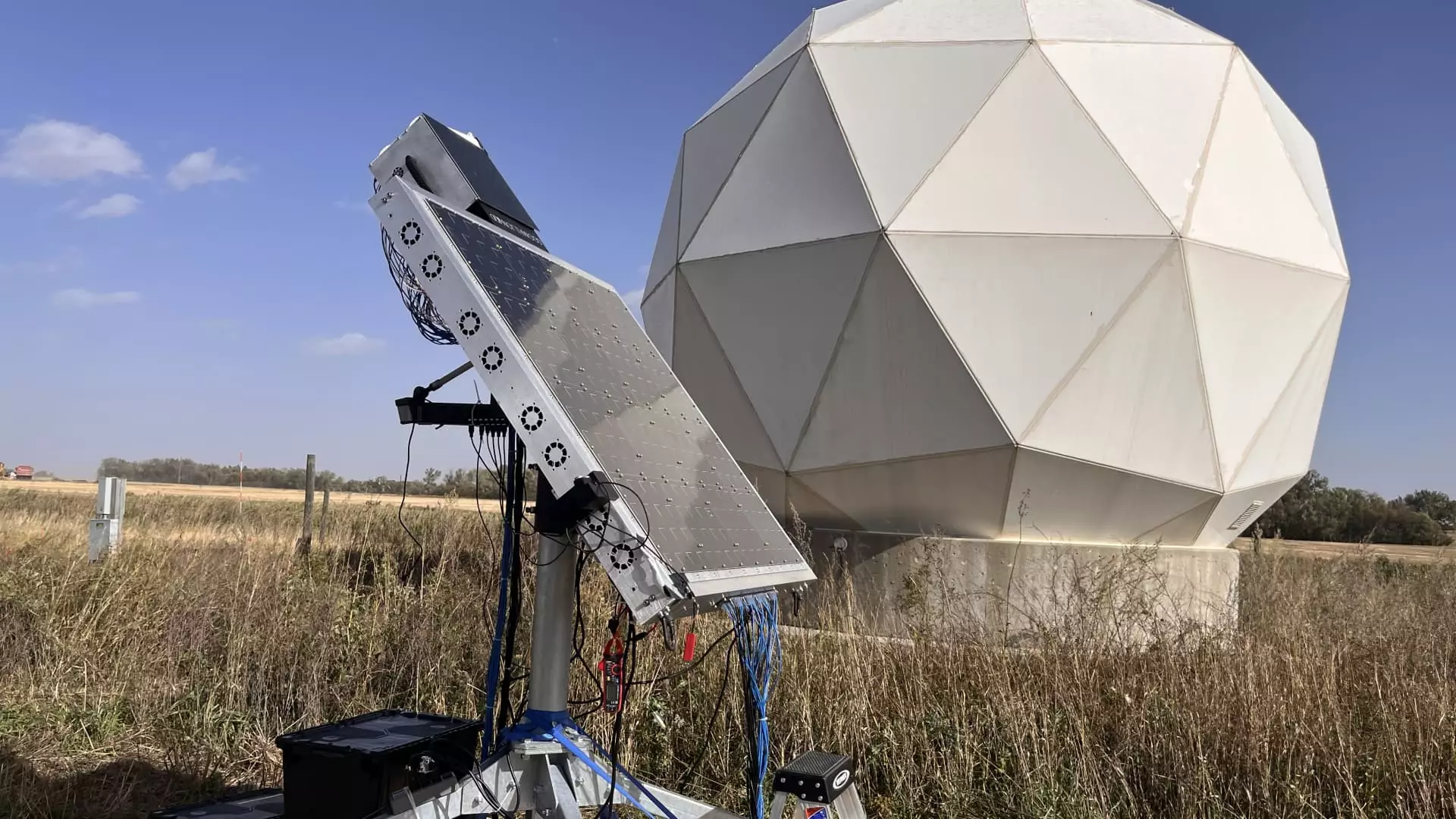In an era marked by exponential technological innovations, Northwood Space stands out as a groundbreaking startup reshaping the landscape of satellite communications. Founded by former television star and musician Bridgit Mendler, Northwood Space has embarked on an ambitious journey to address the critical inadequacies present in current satellite ground station systems. Last week marked a pivotal moment for the company as it successfully linked with Planet Labs’ satellite imagery, a feat that not only demonstrates technological capability but also showcases the potential of the new standard they aim to establish in satellite connectivity.
Northwood Space operates out of El Segundo, California, focusing on a sector that is often overlooked in the space industry—ground stations. These facilities are the backbone of satellite operations, enabling the vital flow of data from orbit to Earth and back. Traditional ground stations rely predominantly on parabolic dish antennas, a setup that limits simultaneous connections to a mere one or three satellites at any given time. Northwood’s innovative approach hinges on using phased array technology, encapsulated in their product called Portal, which promises to scale up satellite connectivity dramatically by allowing connections to as many as ten satellites simultaneously.
Mendler envisions Northwood’s efforts as a transformative step in the ground station as a service (GSaaS) sector, which has begun to attract numerous players. With industry giants like Amazon introducing their own services, the competition is intensifying. Nonetheless, Mendler feels strongly that Northwood’s approach transcends existing limitations and seeks to usher in an era characterized by greater efficiency, reduced costs, and enhanced connectivity reliability.
The satellite communication industry has long been plagued by service blackouts and excessive costs. Mendler draws parallels to the cellular industry, where shared assets and infrastructure revolutionized connectivity and operational efficiencies. This precedent informs Northwood’s strategy, as they endeavor to optimize ground stations by introducing a shared model that fosters improved service at a reduced financial burden. Mendler asserts that their approach aims to elevate ground stations into what she terms “the third leg of the stool” of space technology, which includes rockets and operational satellites.
The advantages of adopting a shared ground station model cannot be overstated. By pooling resources and infrastructure, companies can enhance connectivity options while also taking significant steps to remedy inefficiencies that have beleaguered both established players and new entrants within the satellite communications sector. As the demand for satellite data increases invariably, innovative solutions like Northwood’s become paramount for unlocking substantial growth in the industry.
A notable milestone for Northwood was the recent telemetry, tracking, and control (TT&C) test conducted in the remote expanses of Maddock, North Dakota. Within a short timeframe of six hours, the Northwood team deployed and tested a prototype antenna—affectionately named “Frankie.” The successful bi-directional communication established during this test signifies a monumental achievement for the startup, reassuring stakeholders of the viability of their technology.
Accompanied by a resounding endorsement from Planet Labs, Northwood’s testing outcomes have not only validated the functionality and performance of their phased array antennas but have also positioned them strategically within a competitive landscape that is increasingly leaning toward innovative technological solutions. The completion of the tests opens up numerous avenues for Northwood as they embark on plans to roll out multiple Portal sites capable of supporting high-speed connections exceeding one gigabit per second.
As Northwood Space gears up for its ambitious launch timeline set for the coming year, the company remains focused on expanding its operational footprint. The exploration of potential Portal site locations across the U.S., Europe, Australia, and New Zealand illustrates their commitment to global connectivity. This multi-national strategy not only emphasizes their growth ambition but also acknowledges the increasingly interconnected nature of the satellite communications sector.
In reflection, Mendler articulates a vision of unlocking new possibilities for the future of satellite communications. By addressing legacy issues through innovative ground station technology, Northwood Space stands poised at the forefront of a transformation aimed at propelling the industry into an era defined by accessibility, efficiency, and enhanced operational proficiency. The horizon for Northwood is not merely about connectivity; it is about rewriting the narrative of what is achievable in the realm of satellite communications.

